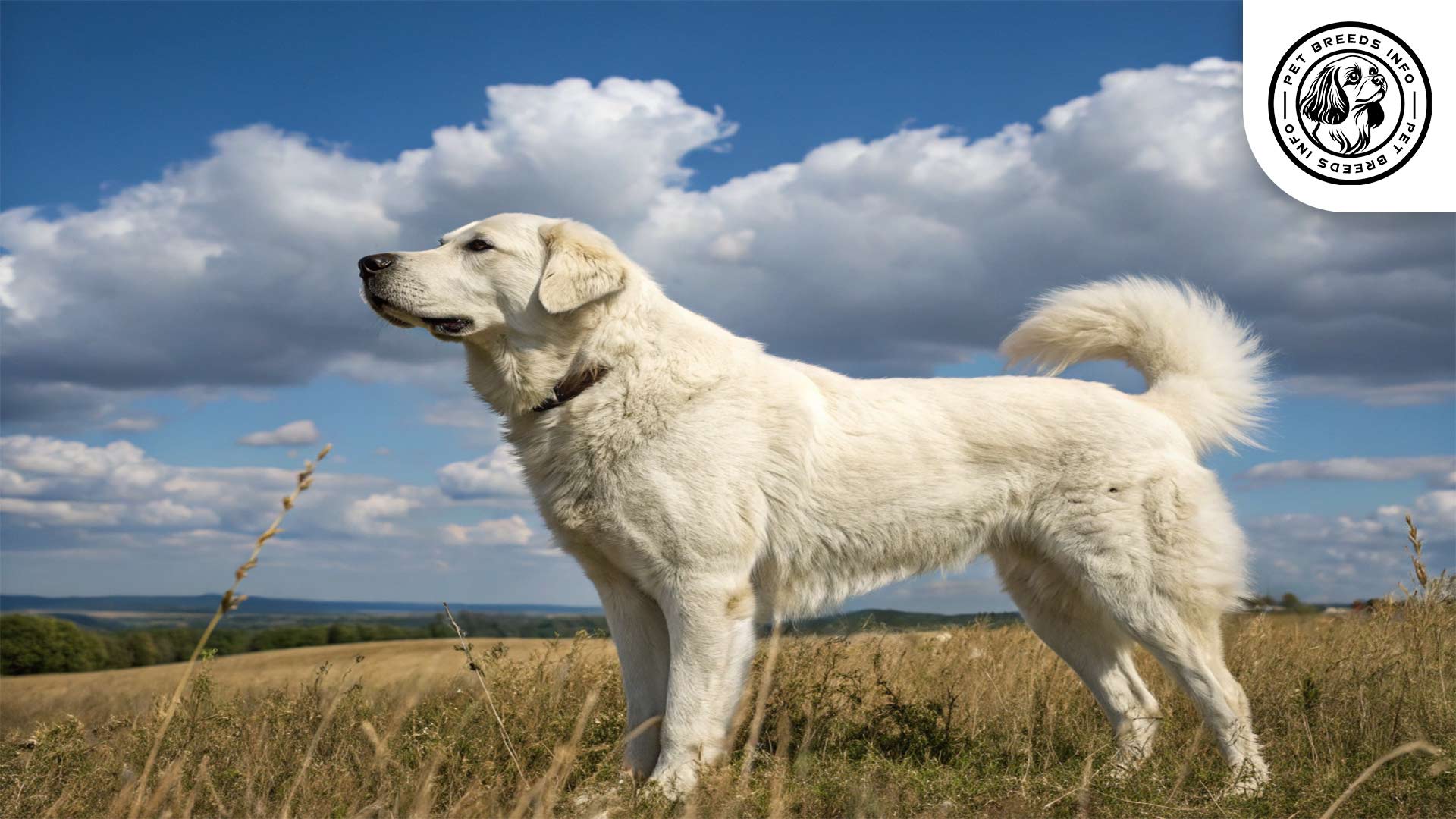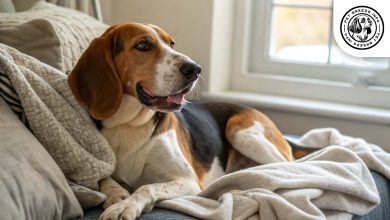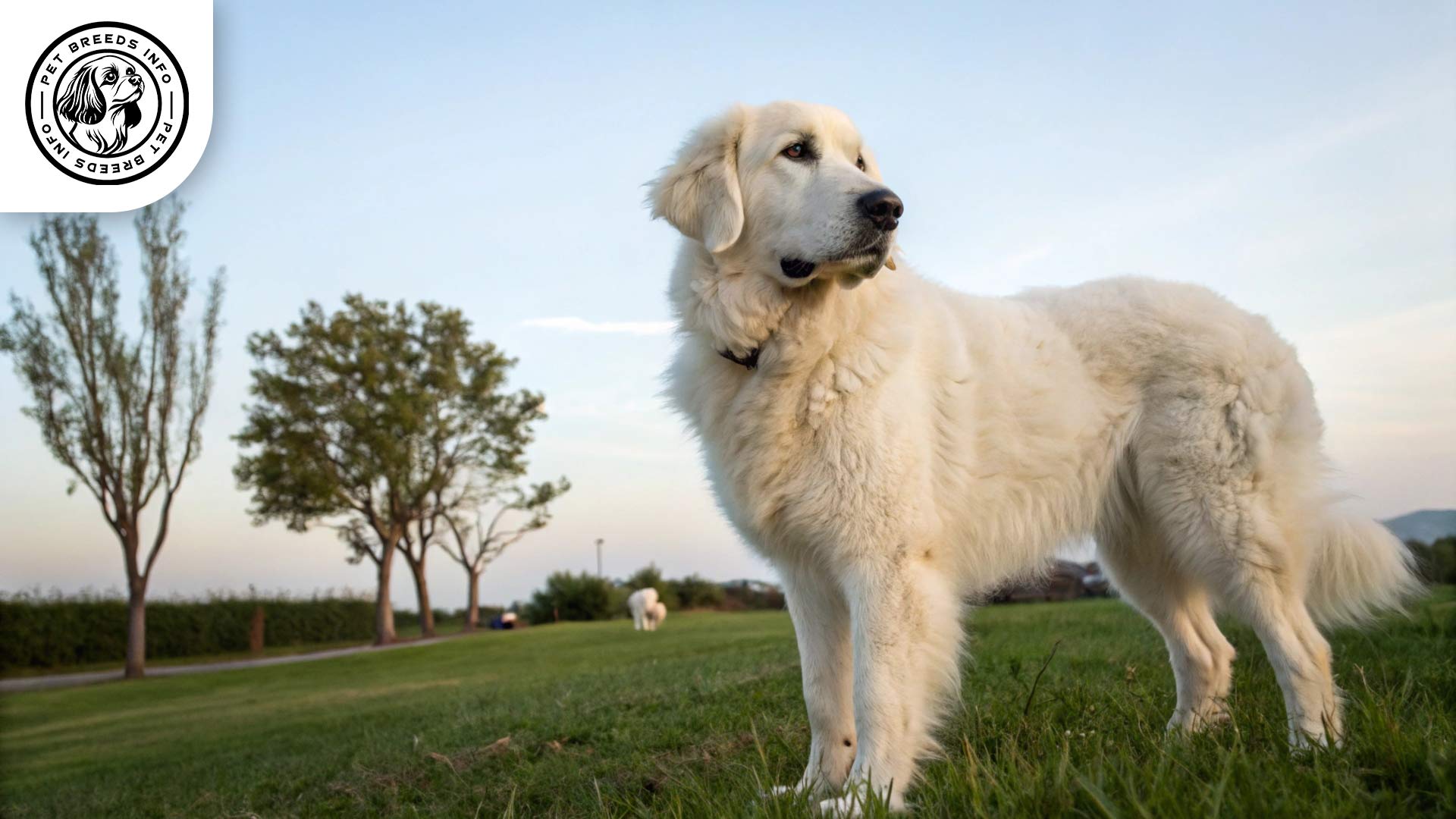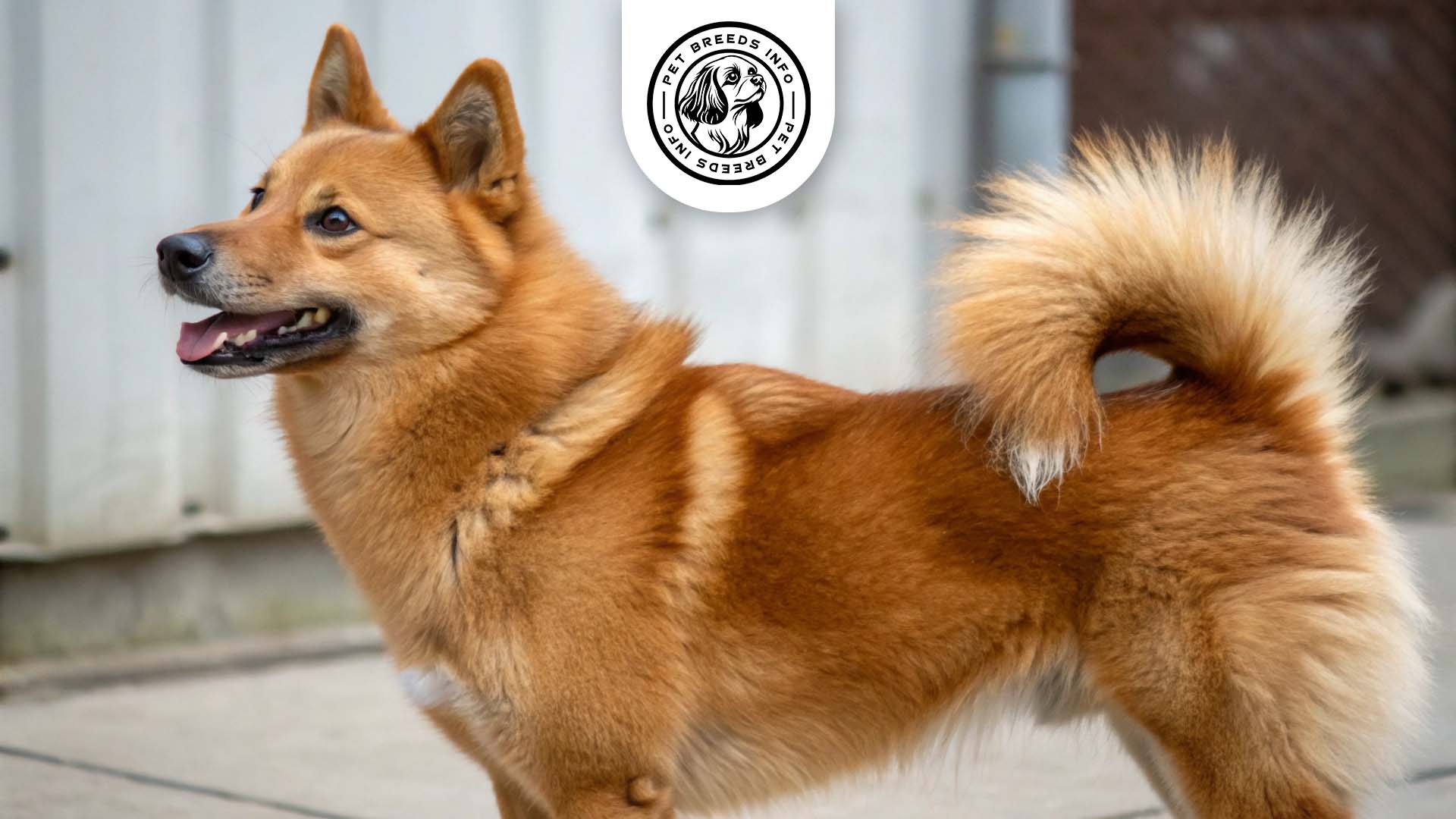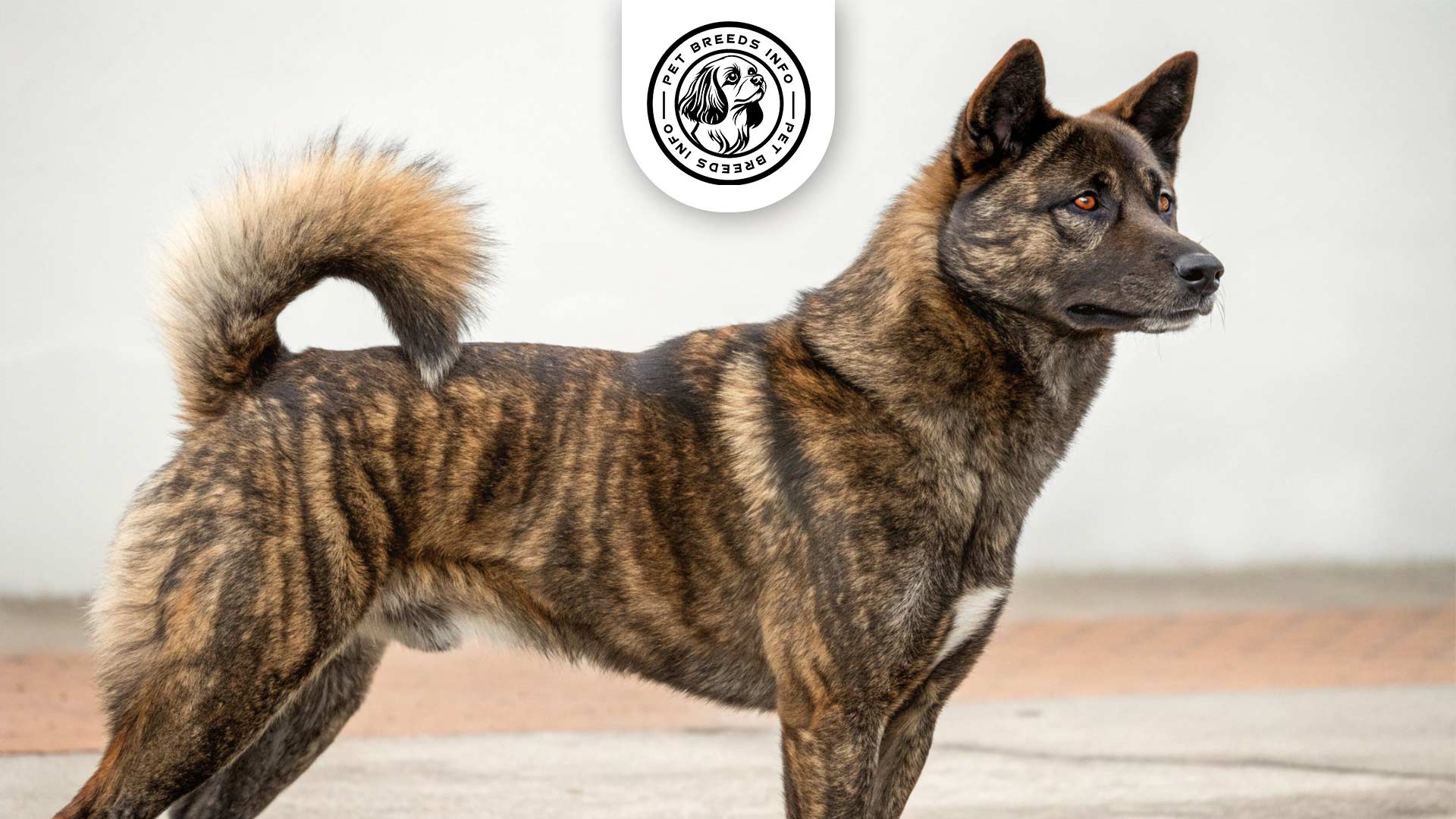Akbash Dog Breed: Size, Health, Price & Personality
General Introduction of the Breed
The Akbash Dog, known as “Akbaş” in Turkish, is a large, powerful livestock guardian breed originating from Turkey. This breed has been used for centuries to protect flocks from predators due to its exceptional guarding instincts and intelligence.
The Akbash Dog was developed in Turkey as a working breed specifically designed to protect livestock from threats such as wolves and bears. It is believed to have descended from ancient mastiffs and sighthounds, combining strength, agility, and alertness.
Table of Contents
| Weight | Males: 90-140 lbs (41-64 kg) Females: 75-110 lbs (34-50 kg) |
| Lifespan | 10-12 years |
| Diet | High-quality dry dog food, raw diets, or well-balanced homemade diet. Protein-rich. Avoid chocolate, onions, garlic, grapes, excessive fatty foods. Two meals per day for adults. |
| Care | Moderate daily exercise (e.g., long walks, secure yard). Weekly brushing (more during shedding). Regular hygiene (bathing, nail trimming, ear cleaning, dental care). |
| Health | Prone to hip dysplasia, bloat (gastric torsion), and hypothyroidism. Regular veterinary check-ups and parasite prevention recommended. |
| Color | White (with possible faint cream markings). |
| Nature | Intelligent, independent, protective, calm, and loyal. Wary of strangers but affectionate with family. Best suited for experienced owners. |
| Price | $600-$1,200 from reputable breeders. $200-$500 for adoption. |
Physical Characteristics
The Akbash is a large and muscular breed. Males typically stand between 28 to 34 inches (71 to 86 cm) at the shoulder, while females range from 27 to 32 inches (69 to 81 cm). Males can weigh between 90 to 140 pounds (41 to 64 kg), and females between 75 to 110 pounds (34 to 50 kg).
The breed has a dense double coat that is usually short to medium in length, providing protection against harsh weather. The only recognized color is white, which helps it blend in with livestock when guarding them.
The Akbash Dog has almond-shaped eyes that range from light brown to dark brown. It has V-shaped ears that fold down and a long, slightly curled tail.
Distinctive traits of this breed include its strong physique, long legs, deep chest, and a broad head with a powerful jaw. Some Akbash Dogs may have slight markings in a faint cream color.
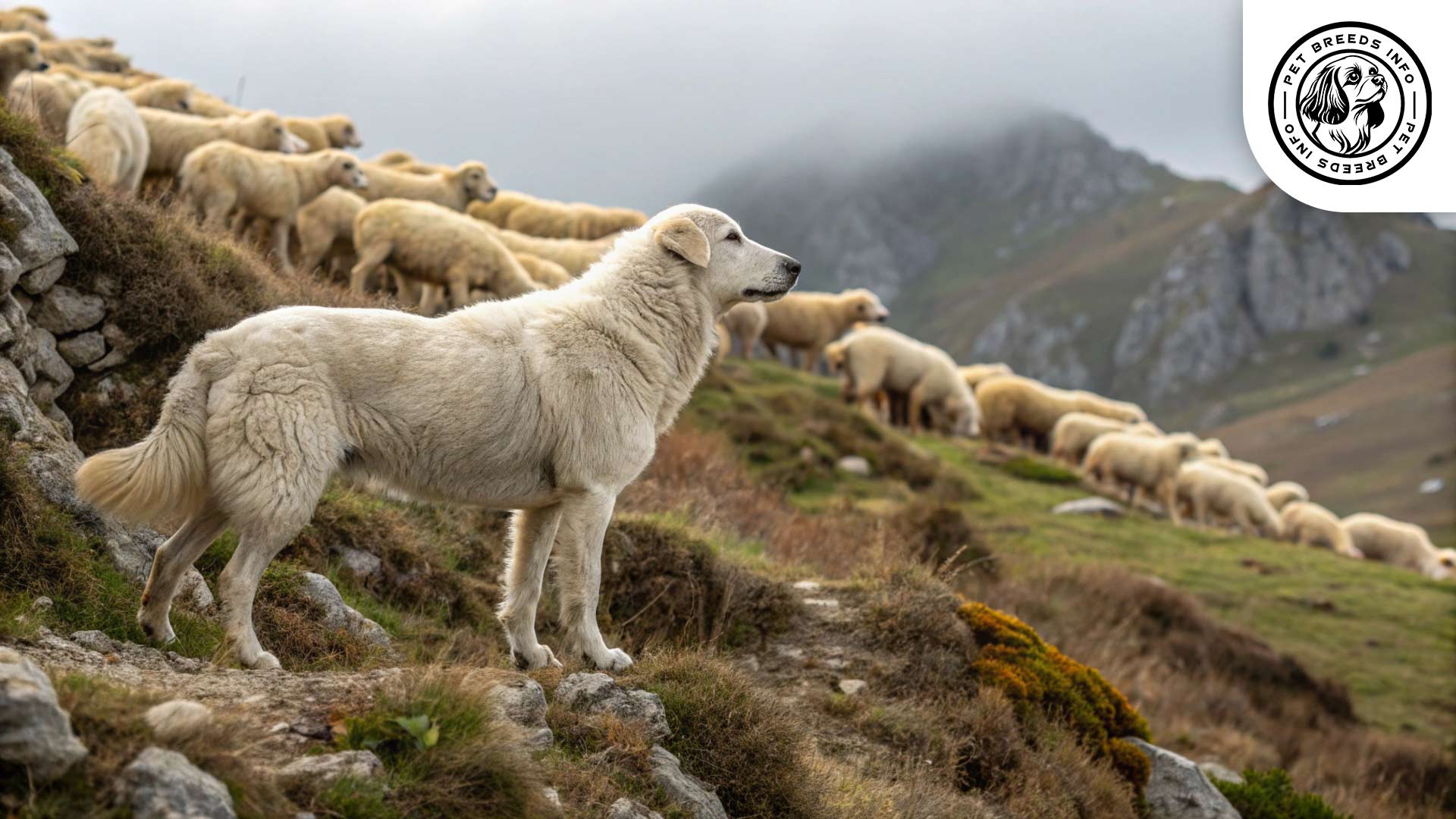
Read More: Akita Dog
Personality and Temperament
The Akbash Dog is highly intelligent and independent, making it an excellent decision-maker when guarding livestock. While it is protective, it can also be calm and affectionate toward its family.
This breed has a moderate activity level but needs daily exercise to stay healthy. It is a devoted and loyal companion known for forming strong bonds with its owners.
The Akbash Dog is naturally wary of strangers, making socialization important from an early age. It can be good with children when raised with them but may not always be playful or overly affectionate. Its protective nature makes it cautious around unfamiliar pets.
Due to its strong guarding instincts, the Akbash thrives in a stable and structured environment with clear boundaries.
Care and Maintenance Requirements
This breed requires a moderate amount of daily exercise, such as long walks or access to a secure yard. It is not suited for apartment living and prefers open spaces where it can move freely.
The Akbash Dog has a weather-resistant coat that sheds throughout the year, with heavier shedding occurring in seasonal changes. Weekly brushing is recommended, with more frequent grooming during shedding periods.
The breed is tolerant of cold weather but may struggle in extreme heat, so providing shade and fresh water is essential in warm climates.
Regular hygiene care includes bathing when necessary, trimming nails monthly, checking ears for infections, and brushing teeth to maintain oral health.
Diet and Nutrition
The Akbash Dog thrives on high-quality dry dog food, raw diets, or a well-balanced homemade diet. A protein-rich diet supports its muscular build and energy levels.
Foods to avoid include chocolate, onions, garlic, grapes, and excessive fatty foods, as these can be toxic or harmful.
Adult Akbash Dogs should be fed two meals per day, with portions varying based on weight and activity level. Puppies require more frequent, smaller meals.
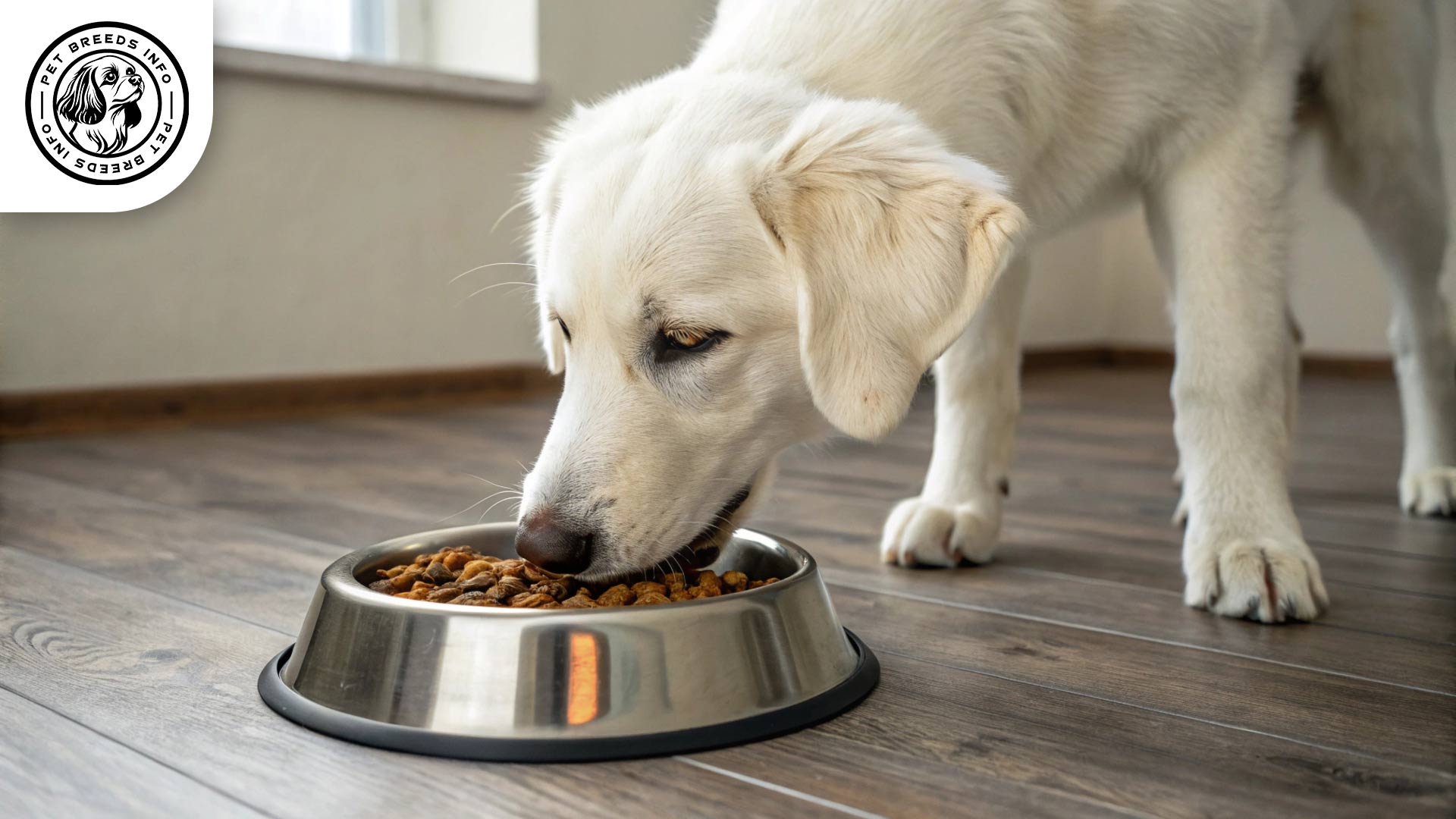
Health and Common Medical Issues
The Akbash Dog is generally healthy but is prone to certain genetic conditions. Common health concerns include hip dysplasia, bloat (gastric torsion), and hypothyroidism.
This breed has an average lifespan of 10 to 12 years. Regular veterinary check-ups, vaccinations, and parasite prevention are essential for long-term health.
Read More: Afghan Hound Dog
Training and Behavior Management
The Akbash Dog is intelligent but can be independent, requiring firm and consistent training. Positive reinforcement methods work best for this breed.
Early socialization with people and other animals is crucial to prevent aggression or excessive wariness.
Establishing leadership and boundaries early on will help this breed develop into a well-behaved guard dog and companion.
Interaction with Other Animals and Humans
The Akbash Dog can be good with children when properly introduced and socialized. However, interactions should always be supervised due to its strong guarding instincts.
This breed may not always get along with other pets, especially smaller animals, as it can be territorial. Careful introductions are necessary.
The Akbash Dog is best suited for experienced owners who understand livestock guardian breeds. It tends to be independent but remains devoted to its family.
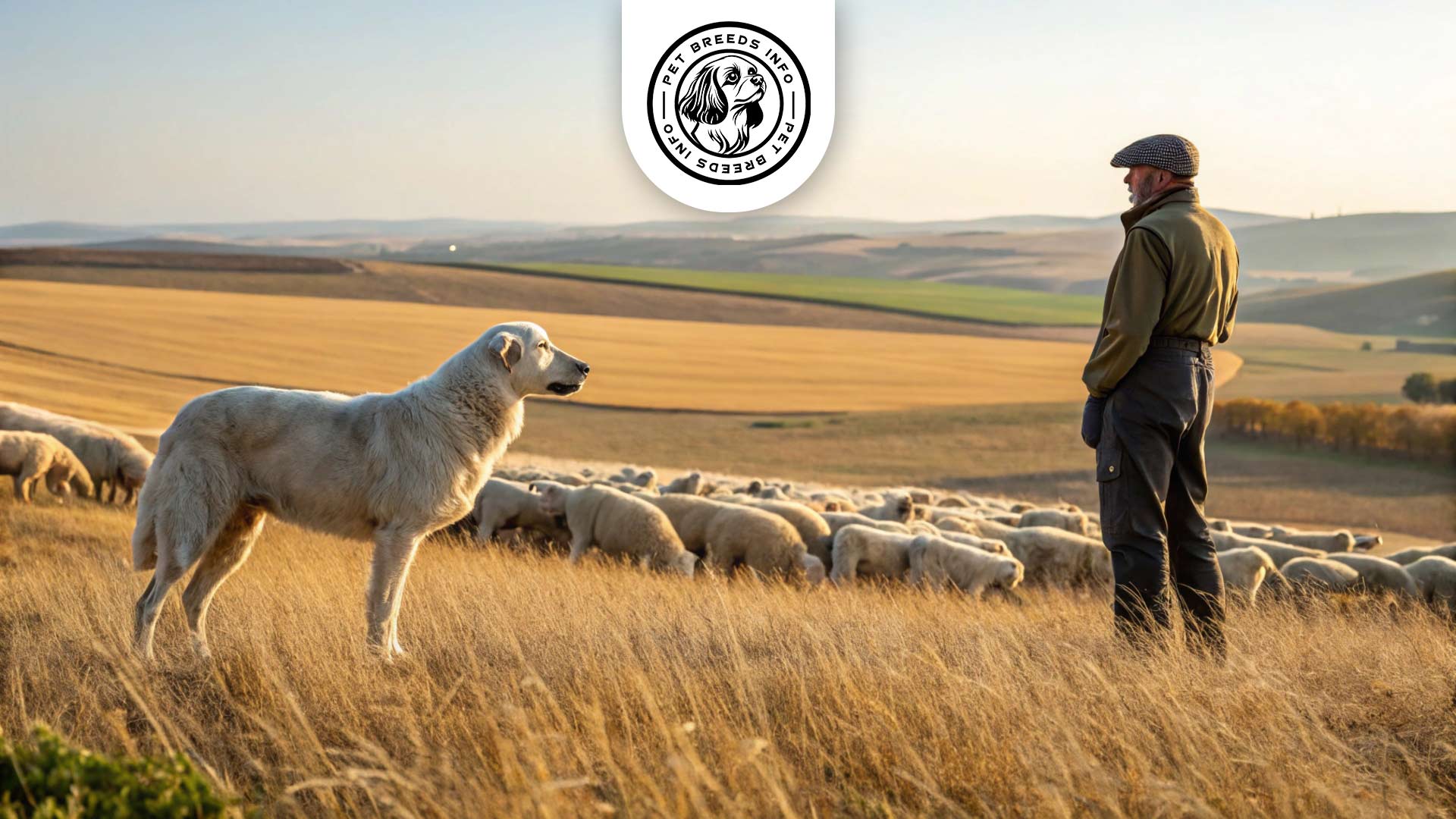
Price and Availability
The cost of an Akbash Dog can range from $600 to $1,200 when purchased from a reputable breeder. Adoption may be a more affordable option, with fees typically between $200 and $500.
When looking for an Akbash Dog, it is crucial to choose responsible breeders or adoption centers that prioritize the health and well-being of the dogs.
Conclusion and Final Thoughts
The Akbash Dog is an excellent choice for owners who need a reliable and protective livestock guardian. This breed is best suited for those with experience handling large and independent dogs.
It requires space, regular exercise, and proper socialization to thrive. While affectionate toward family members, it remains reserved with strangers.
Before choosing an Akbash Dog, potential owners should consider its strong guarding instincts, space requirements, and care needs to ensure a harmonious match.
Read More: American Bulldog
FAQ
Is the Akbash Dog good with children?
Yes, the Akbash Dog can be good with children if properly socialized and raised with them. However, due to its large size and protective instincts, supervision is recommended during interactions to ensure safety and mutual respect.
How much exercise does an Akbash Dog need?
The Akbash Dog requires moderate daily exercise, such as long walks or access to a secure yard. It thrives in open spaces and is not well-suited for apartment living. Regular physical activity helps maintain its physical and mental well-being.
Is the Akbash Dog easy to train?
The Akbash Dog is intelligent but independent, which can make training challenging for inexperienced owners. Consistent, firm training with positive reinforcement methods works best. Early socialization is crucial to manage their natural wariness of strangers.
What are common health problems in Akbash Dogs?
Common health issues in Akbash Dogs include hip dysplasia, bloat (gastric torsion), and hypothyroidism. Regular veterinary check-ups, a proper diet, and maintaining a healthy weight can help prevent or manage these conditions.
